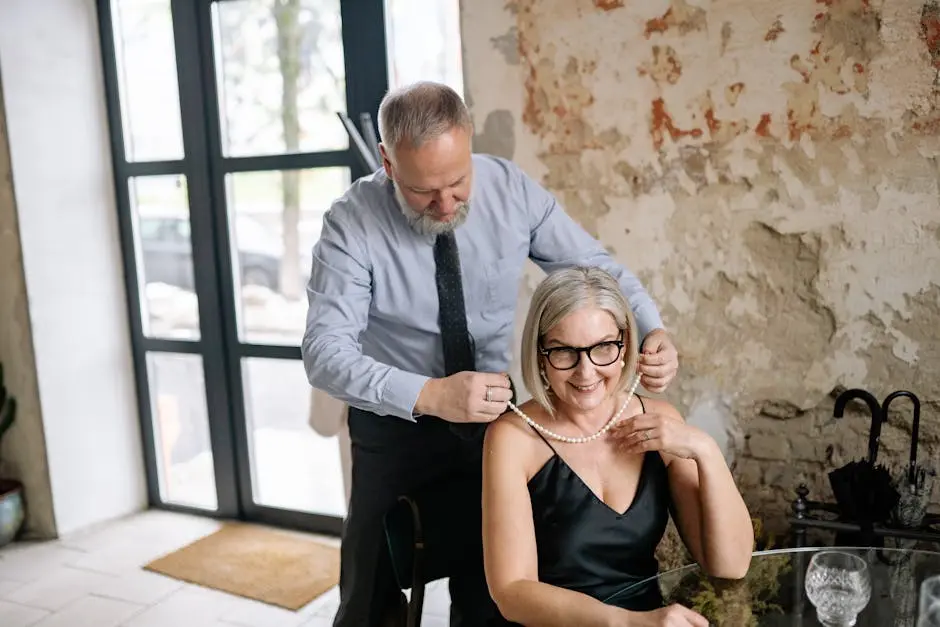Dressing assistance is an essential service for individuals who may have difficulty getting dressed on their own due to various reasons such as age, disability, or illness. In this FAQ blog, we’ll explore what dressing assistance involves, who can benefit from it, and the different aspects of this helpful service.
Who Benefits from Dressing Assistance?
Dressing assistance can benefit a wide range of individuals, including the elderly, people with physical or mental disabilities, and those recovering from surgery or illness. It helps these individuals maintain their dignity and independence.
For elderly individuals, dressing can become increasingly challenging due to factors like reduced mobility, arthritis, or balance issues. Having someone to assist can make a significant difference in their daily routine.
People with physical disabilities may find certain movements difficult or impossible, making dressing a daunting task. Dressing assistance offers a means to overcome these obstacles and ensures they are dressed appropriately for different occasions.
Those suffering from mental disabilities or cognitive impairments, such as dementia, may also find dressing challenging. They might forget the sequence of steps involved or choose inappropriate clothing for the weather or event. Dressing assistance provides the support they need to be dressed correctly and comfortably.
Components of Dressing Assistance
Dressing assistance may include selecting appropriate clothing, assisting with putting on and taking off clothes, and ensuring that items are worn correctly and comfortably. The assistance provided is tailored to the individual’s specific needs.
Selection of clothing is more than just picking out an outfit. It involves understanding the person’s preferences, the day’s activities, and any special considerations like medical devices or seasonal needs. This ensures the clothing is both practical and preferred by the individual.
Assisting with putting on clothes can range from helping with simple items like socks and shirts to more complex garments like compression wear or medical braces. The level of assistance is always based on the individual’s unique needs and abilities.
Ensuring that clothes are worn correctly involves checking that items are not inside out, ensuring buttons and zippers are fastened, and making sure there are no discomfort points that could cause irritation or sores. This meticulous attention to detail is crucial for the individual’s overall comfort and well-being.
Physical Support During Dressing
Providing physical support, such as helping individuals stand or sit, lifting limbs, and guiding movements, can be a vital part of dressing assistance. This ensures that the person remains safe and comfortable during the process.
For those with restricted mobility, transferring from one position to another, like moving from a bed to a wheelchair, can be quite challenging. Dressing assistants are trained to handle these tasks safely, ensuring that the person is secure and supported throughout.
In some cases, more specialized physical support may be needed, such as guiding a weak hand to button a shirt or gently lifting a leg to put on trousers. This kind of detailed, hands-on help can enable someone to dress more comfortably and with less strain on their body.
Physical support is not only about strength but also about skill. Knowing how to assist someone without causing pain or discomfort is a fundamental part of effective dressing assistance. This expertise ensures that the individual feels safe and respected throughout the process.
Choosing Appropriate Clothing
Choosing the right clothing involves considering factors like the weather, the individual’s comfort, and any medical or mobility issues they may have. This ensures that the person is dressed suitably for their day’s activities.
Weather is a primary consideration. On a cold day, layers and warm clothing are necessary, while breathable fabrics and lighter garments are preferable in warmer climates. The choice of clothing directly impacts the individual’s comfort and well-being.
Comfort is another key factor. Clothes that are easy to put on and take off, soft fabrics, and appropriate fits can make a world of difference, especially for those who may spend a lot of time sitting or lying down.
For individuals with specific medical needs, such as those with intravenous lines or catheters, special adaptive clothing may be required. These garments are designed to accommodate medical equipment and provide ease of access without sacrificing comfort or style.
Ensuring Personal Safety
Ensuring that clothes fit properly and are free from hazards like loose buttons or zippers can prevent accidents and enhance comfort. Safety is a key consideration in every step of dressing assistance.
For individuals prone to falls or those with balance issues, choosing clothing that does not impede movement or catch on objects is fundamental. Items like long, loose robes might present tripping risks, so alternatives should be considered.
Monitoring for any signs of pressure sores or skin irritation is also vital. Clothing that is too tight or made from abrasive materials can cause significant discomfort or even medical issues over time. Regular checks can prevent these problems.
Safety also involves ensuring that accessories and footwear are appropriate. Non-slip socks or shoes can help prevent falls, and avoiding accessories that might snag or pull on the skin is equally important. Careful consideration ensures that the individual is safe and well-protected.
Final Thoughts on Dressing Assistance
Dressing assistance can greatly improve the quality of life for those who need it by ensuring they are comfortable, confident, and well-dressed. Whether it’s selecting the appropriate clothing, providing physical support, or ensuring personal safety, dressing assistance covers a range of services tailored to individual needs.


